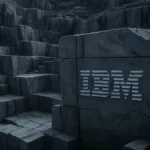This week is Cisco’s big customer event in Las Vegas called Cisco Live, they’ve pretty much taken over Las Vegas this year. Channeling Donald Trump, the show is huuuuge! What makes this year’s event interesting is this is the first pure showcase of their new CEO Chuck Robbins. Already, just as it opens, I’m feeling a very different energy and, strangely, a sense of fun. Technology is the single biggest change agent in the market and Cisco plans to be at the heart of the coming digital transformation.
Here is my sense of this opening keynote and what it means to Cisco and to you.
What The Digital World Requires
As with every event like this you have to speak to the audience and Chuck did that right out of the box. He argued that the coming change must start from the top. You need a leader that can visualize the future, understand what is possible, and know how to transition from where the firm or country is to where it needs to be. But there is no way a leader knows the granularity of information needed to make this change and thus they have to rely on IT. There has to be a blended strategy of vision and technology and Chuck is arguing that Cisco not only is doing this internally but helping its customers proactively to help drive this change.
Chuck argues that Cisco’s time is now because the nature of the change surrounds what Cisco does ranging from product advancement to customer interactions. He sighted a customer who praised Cisco as the only vender he had that not only reduced costs but increased his firm’s effectiveness and success.
Digital Ready Network
At the heart of driving this change is a Digital Ready Network, a network that isn’t just capable of driving the business of today but the needs of tomorrow. Ranging from analytics, to security, automation, and Collaboration in all their forms. He argued that if you are going to focus on things like IoT that connects things, you first need to connect people. This is the first blending of collaboration and IoT at a conceptual level and it actually makes a certain amount of sense because both people and machines increasingly need to work in concert not only within their respective pools but between them.
You also need a balance of hardware and software. Hardware isn’t going away, it is just being more rapidly and deeply advanced through software. Cisco has purchased 190 companies in its lifetime, 15 of them in the last year. This coupled with Cisco’s massive R&D budget (in the $6B range) forms the bases for their innovation.
They partner with firms like Apple (for PCs and mobile devices), Inspur for regional access to the Chinese market, and Ericsson for advancements in networking capability at scale. They invest in and more recently co-develop with other firms to close product gaps and move more rapidly in the market.
Bringing it back to the core message they are driving to assure that it is the business issue that drives their decisions and he argues that for Cisco customers this is what will help make them successful as well. They used Panera Bread as a customer example a firm that is aggressively using technology to improve the customer experience.
Corporate Social Responsibility
With country engagements they are focused on what is important to them, inclusion, sustainability, job creation, innovation, and healthcare. Their Corporate Social Responsibility effort stands out in particular here. Creating access to clean drinking water through mobile connectivity. They want to assure that this digital transformation is inclusive to help turn people into global problem solvers with the goal to impact 1B people in a decade. A powerful message.
Wrapping Up: Cisco’s Promise
Cisco’s promise is they will drive more innovation faster than ever before. I think Chuck did a good job of supporting this speed because they have a combination of massive R&D spending, partner efforts, investments, joint ventures, and an impressive acquisition rate that shows they can build, partner, and buy the technology they need to maintain this fast pace. I also think they are right that, at least for the near term future, the network is where much of the activity will be because the data won’t help much unless you can access it, analyze it, secure it, and rapidly distribute the result to those that need it timely. Cisco clearly plans to be at the heart of this next wave and, with a combination of focused efforts and an increasing interest in Corporate Social Responsibility, they’ll likely get there.








